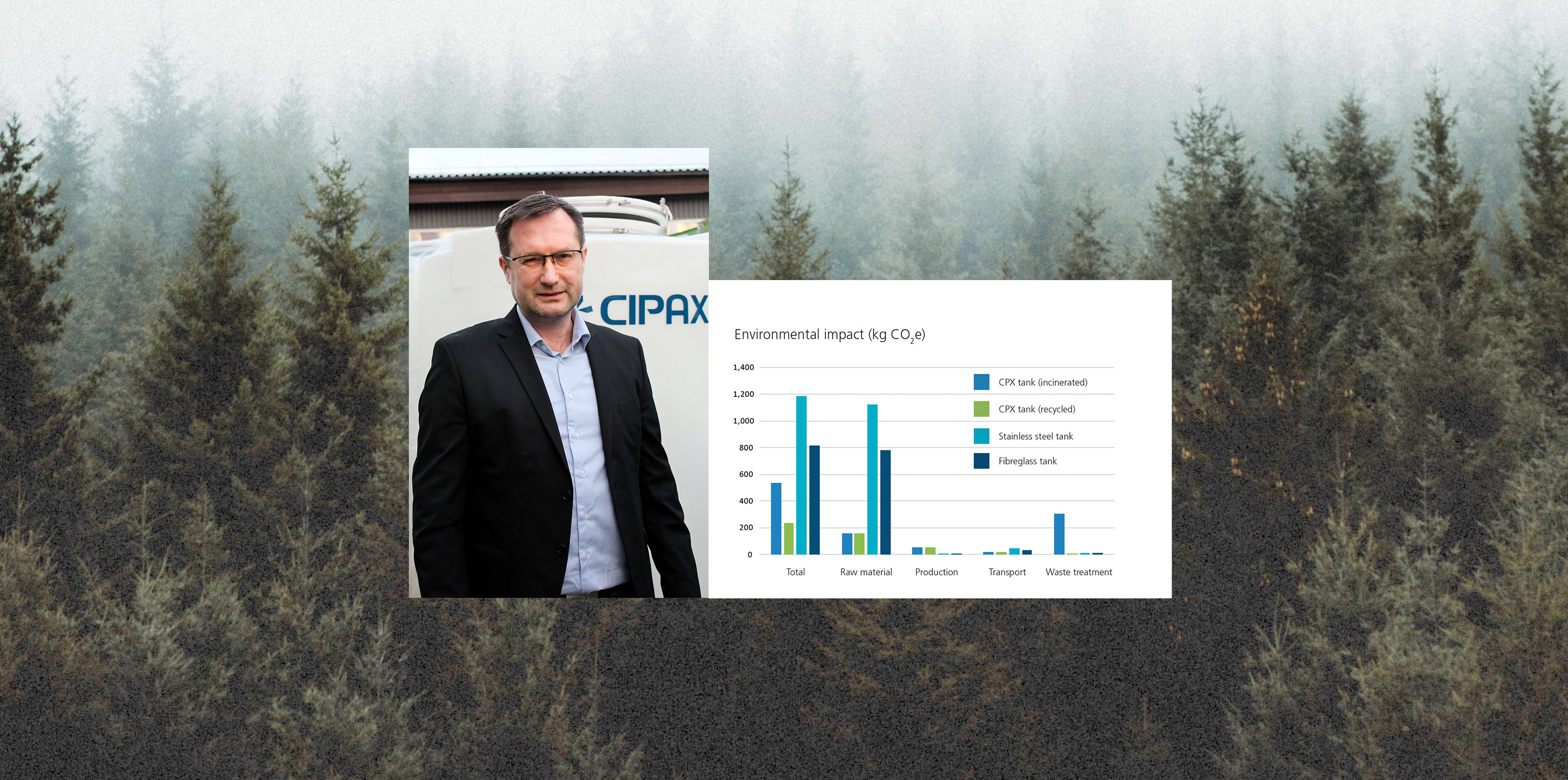POLYETHYLENE – A GOOD ENVIRONMENTAL CHOICE
-
Helping to reduce the environmental footprint is important for Cipax. All types of production have an impact on the environment, so anything that helps to reduce this impact will generate positive effects for our shared environment. “For us, it is valuable to understand our products’ footprint compared to the same types of products made from other materials available on the market. This knowledge also helps us in our sustainability work,” says Lars- Erik Andersson, CEO of Cipax. To get a clear picture of the current situation, Cipax therefore commissioned the consultancy company Ramboll, in collaboration with WSP, to perform a life cycle analysis on one of its standard products, a storage tank made from the recyclable plastic material polyethylene. “It was important for us that the report was independent and reviewed,” considers Lars-Erik Andersson. “In a life cycle analysis, you are monitoring the product’s entire life cycle and its total environmental impact – from raw material extraction to waste management. The task for Ramboll was to
-
conduct an independent investigation and comparison, and the results were pleasing for us,” continues Lars-Erik Andersson. In order to produce a fair comparison in the analysis, it was assumed that all the storage tanks are produced in the same place and delivered to an average European customer. Furthermore, the stainless steel tank consisted of 72% recycled steel, which is the average recycling level in the sector. Depending on what has been stored in a Cipax polyethylene tank, it can either be recycled or incinerated, which has also been presented separately in the report. In all cases, Cipax’s tanks have the lowest environmental impact in respect of climate, acidification, eutrophication, ground level ozone and primary energy consumption. “The report shows that polyethylene is a better alternative than both stainless steel and fibreglass from a sustainability perspective. Polyethylene has a significantly lower environmental impact, and in the case of polyethylene that is recycled, the climate impact is five times lower than that of stainless steel and almost four times lower than fibreglass,” concludes Lars-Erik Andersson.
-
The full life cycle analysis can be found in the report “Comparative LCA of storage tanks”, produced by Ramboll and verified by WSP. The study conforms to the applicable LCA standards, ISO 14040-44. A life cycle analysis is an accepted method for calculating the environmental impact of products and services by quantifying emissions throughout a product’s entire life cycle, from raw material extraction to waste management. A summary of the report can be found at http://www.cipax.com/quality-environment.

